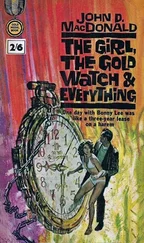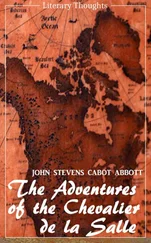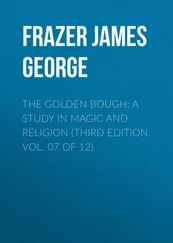Paley was a logician who lived by the cut and thrust of argument. He added the abstractions of philosophy to the science-versus-religion debate but, as in any great court battle, the case for natural theology was first grounded in hard evidence and that base had long since been constructed by John Ray (1627–1705), its founding father. In many ways Ray and Paley were complementary and opposite. While Paley, at the end of the Age of Reason, depended upon the tightness of his logic, Ray, at the beginning of the scientific revolution, was someone who revelled in facts – both in getting them straight and getting them in order. While Paley was a man who fitted somewhat awkwardly in the machinery of the Church of England, he was nonetheless a true churchman. John Ray was a man of his time – a dissenter.
For every person who is happy to conform, to belong, to submit to the group will, there is always at least one who will not compromise: someone who is sure enough of their own ground to stand apart independently, usually on a matter of principle. It is a great tradition, reinforced periodically by governments who try to force us into what the American poet Emerson called ‘a foolish consistency’ (‘the hobgoblin of feeble minds’). Such was John Ray. He was not just a dissenter; he was a Dissenter. In order to prepare for the Church, he had attended Cambridge in 1644 where his brilliance in science, languages and mathematics quickly showed. He was made a Fellow of Trinity College in 1649, Lecturer in 1651, and sub-Dean in 1658. In 1660 he was ordained as a priest. A stellar career as a Cambridge scholar seemed in prospect, with the living of a rural parish or two to support him and to provide the freedom to pursue his great interest, natural science. Happily for us, although he had already published his first book – a compilation of the plants of Cambridge – his timing was bad.
Those were tense years within the state religion and the state itself. The English Civil War was ended, but bitter ill-feelings persisted, particularly among those aristocratic, royalist Cavaliers and their supporters who had lost their lands to the regicide Puritan Roundheads (thus creating a new landed middle class). The broad church that Elizabeth I had carefully nurtured through dozens of compromises had been thrust aside in a passion of radical Puritanism. With the restoration of the monarchy (in the form of Charles II) and election of a reactionary, strongly Cavalier Parliament in 1661, the formal process of retribution began. The obvious target was Puritanism itself and legislation, rather than the sword, was the tool. The Act of Uniformity passed by Parliament in 1662 was not just religious; it was also political, restricting the civil and religious freedoms by codifying the nature of the Church of England and its practices and imposing severe sanctions on dissenters. Instead of a broad church that could tolerate a range of ways of practising Christianity, Parliament opted for conformity. Non-conformists became liable to severe sanctions, including prison or transportation.
All clerics and teachers (and most definitely all fellows of Oxford and Cambridge colleges) were obliged to conform. This meant that they had to worship according to the restored 1549 Book of Common Prayer and swear to the Thirty-nine Articles of 1571 that defined the core doctrines of the Anglican Church. Back in 1643, as a price for their support, Scottish Presbyterians had forced the Roundheads to swear the Solemn League and Covenant which, among other radical measures, abolished bishops and allowed individual congregations to ordain their own priests. The 1662 Act required all clerics of the Church of England to adjure this oath.
Ray had not sworn the oath and had in fact been ordained by a bishop. He was certainly comfortable with the Thirty-nine Articles. But he objected to the coercion; he could not agree that someone who had sworn a sacred oath should be forced to abandon it. At the same time he may already have been restive for greater independence to continue his scientific work. For reasons, particular or principled, that are now unclear, along with 2,000 others he refused to subscribe to the Act of Uniformity. 42 With this, he gave up his fellowship at Cambridge and could no longer teach or preach, although he retained a lay membership of the Anglican Church.
Ray’s father was the village blacksmith at Black Notely in Essex, where Ray was born in 1627. Little else is known about his father, but we know that Ray’s mother was ‘a very religious and good Woman, particularly to her Neighbours that were lame or sick’. Elizabeth Ray was a herbalist healer, which required her to have an excellent working knowledge of botany. From her, Ray acquired a love of plants, of all nature, of enquiry, and above all an appreciation of the value of precise knowledge. For example, a herbal healer must be able instantly to tell the difference between two very similar looking plants, one edible, the other lethal: the wild parsnip and water hemlock. As Nicolas Culpepper described them in his famous 1652 herbal, The English Physitian or an astrologo-physiscal Discourse of the vulgar Herbs of this Nation , the former ‘easeth pains and stitches in the sides, and dissolveth wind both in the stomach and bowels’. The latter is ‘exceeding cold and dangerous, especially to be taken inwardly’.
If we look at Culpepper or another typical herbal of the period, John Gerard’s Historie of Plants (1597), 43 with its delightful prose and 1,800 woodcut illustrations, we can guess that John Ray had considerable command of a wide range of plants and their properties, medical and otherwise, even before he entered Cambridge. A lengthy recuperation from an illness in 1650 seems to have given Ray the leisure to explore the countryside and the world of plants more fully. ‘First I was fascinated and then absorbed by the rich spectacle of the meadows in spring time; then I was filled with wonder and delight by the marvellous shape, colour and structure of the individual plants.’ This soon grew into a systematic study of nature. 44
Ray’s first scholarly book was Catalogus Plantarum circa Cantabrigiam , a synopsis of the plants of Cambridge published in 1660 while he was still at Trinity. The obvious next subject would be a botany of all England, an ambition in which he was encouraged by his former pupil and now close friend, Francis Willoughby. In 1662, in his new freedom, he poured himself into this work. His now independent career eventually took him beyond the countryside around Cambridge to further destinations, both geographically and intellectually, than he might otherwise have imagined. Willoughby, no mean naturalist himself and by now not only a friend but a benefactor, proposed a scientific tour of the Continent and in April 1662 Ray, Willoughby and two other Cambridge friends set off on a three-year journey that would take them through France, Belgium, Holland, Switzerland, Austria and Italy. They collected, they discussed science with all the famous men of Europe, and they made notes and drawings of everything they saw and did. This journey set Ray’s career firmly on a course that would contribute to changing the religious as well as scientific world.
By 1660, the tightly circumscribed view of the richness and goodness of God’s creation as demonstrated by the natural history of Europe had begun to be overshadowed by the abundance of plants and animals brought in from the rest of the world by explorers and merchants. For Ray and his contemporaries across Europe, exploration in every corner of the globe had opened a Pandora’s box of nature. If this was God’s creation, suddenly it had unfathomable, incomprehensible depths of diversity. Noah’s ark could not have held a thousandth part of the living animals and plants with which natural philosophers were confronted, as travellers brought back to Europe every kind of unimagined creature – some real but improbable (like the kangaroo), others (like the mermaids and unicorns) fabulous yet all too believable. In the last half of the seventeenth century it was relatively easy to know at least eighty per cent of the plants of Britain and difficult but not impossible to know sixty per cent of the plants of western Europe. Ray thought that there were some 10,000 kinds of insects, 1,300 other kinds of animals and 20,000 species of plants in the world. By 1750, those estimates were debatable; by 1850 they were laughable. Today the worldwide total of known living species is 1.8 million and rising.
Читать дальше












